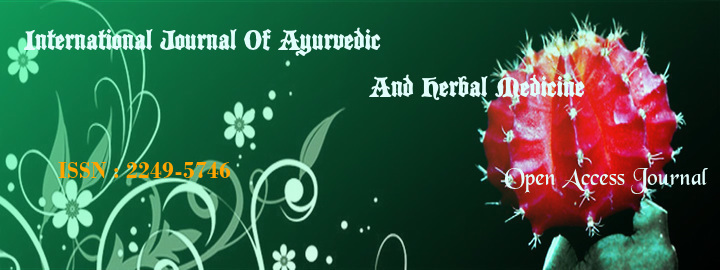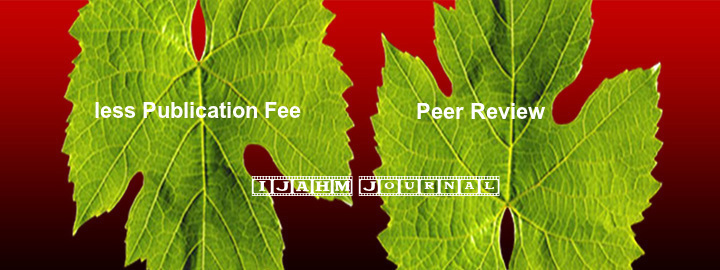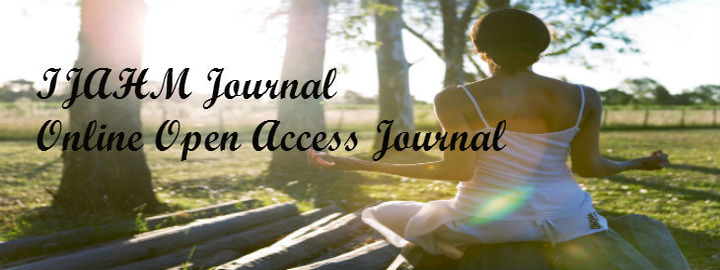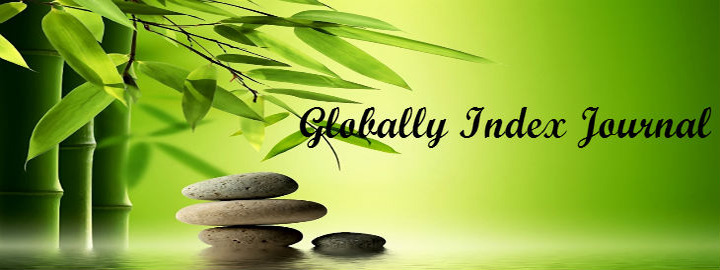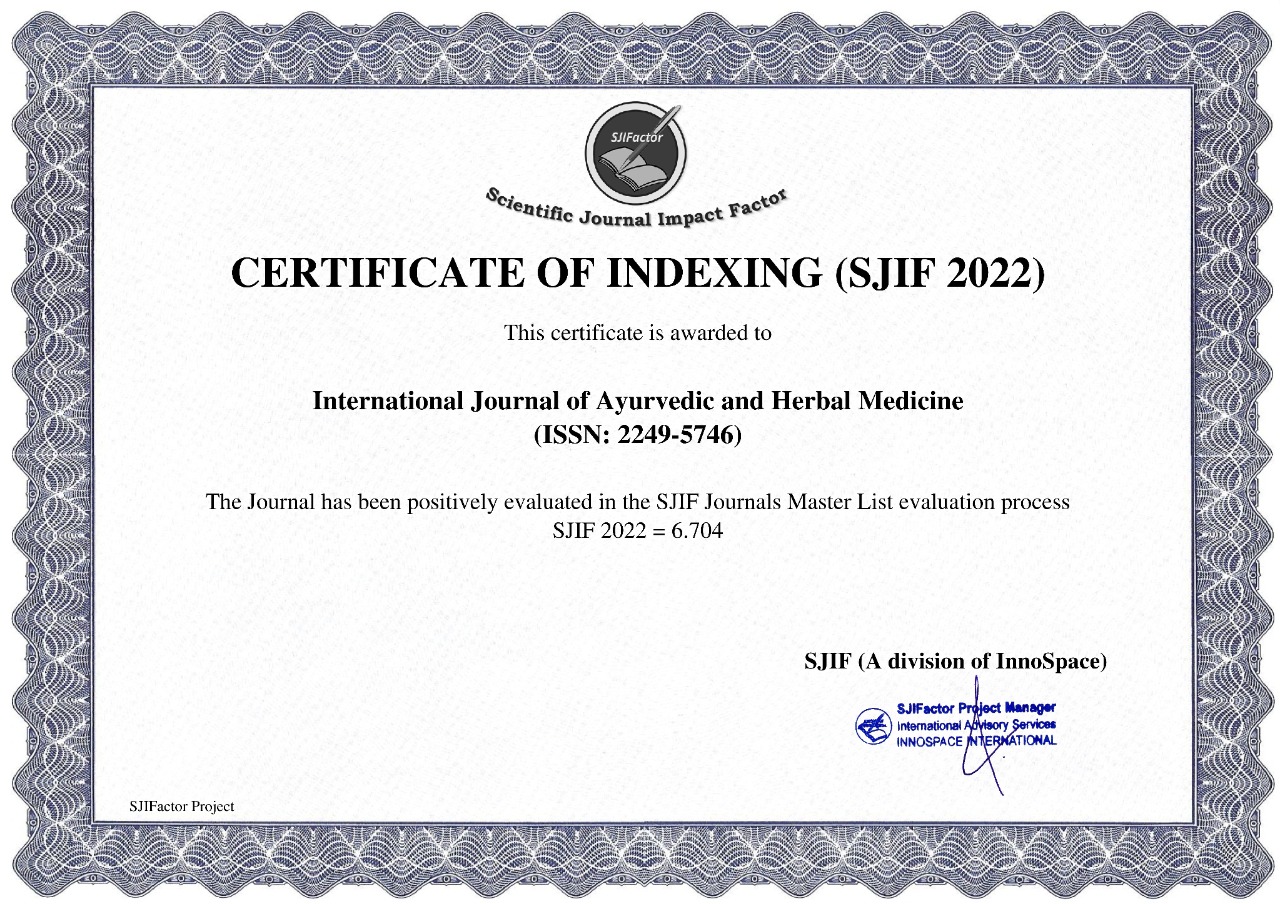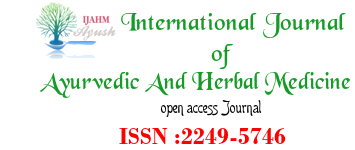


Siva Prasad Kanchi
DOI : http://dx.doi.org/10.31142/ijahm/v9i3.06
SVSSC Government Degree College, Shar Road, Sullurpet, Spsr Nellore District, Andhra Pradesh, India
ABSTRACT
Centella asiatica (gotukola) has been used as a medicine in the Ayurvedic tradition of India for thousands of years. It is listed in the historic Susruta samhita, an ancient Indian medicinal text. In China, gotukola is one of the reported “Miracle elixirs of life”. In 19th century, Gotukola and its extracts were incorporated into the Indian pharmacopeia and considered as the Food for the brain. This study evaluated the anticonvulsant effect of chloroform extract of Centella asiatica (CA) with particular reference to carbohydrate metabolism in different types of rat muscles. The rats were randomly divided into 4 groups having 6 in each group: i.e. Control group received Saline, PTZ-induced epileptic group (60 mg/kg b.w op/ 1 day), Epileptic group pretreated with chloroform extract (CE), and Epileptic group pretreated with Diazepam (DP; Reference control) (2 mg/kg b.w/ip/ day). The CA extract is administered at the dose of 200 mg/kg body weight orally for one week. The experimental results were observed that the decreased content of Total carbohydrates in the muscles i.e. White Vastus (WV), Red Vastus (RV), Soleus (Sol) and Gastrocnemius (GN); increased the glycogen and glucose levels during PTZ-induced epilepsy in all the muscles. The reversal changes were observed on pre treatment with the chloroform extract and diazepam. Hence, it is evident that the different bioactive factors of Centella offered protection against PTZ-induced epilepsy.
Keywords: Epilepsy, Anticonvulsant, Centella asiatica, Pentylenetetrazole, carbohydrate, rat muscle.
REFERENCES:
1. Inamdar PK , Yeole RD, Srivastava de Souza, NJ. Stability study of the active constituents in the Centella asiatica extract formulations. Drug Dev. Industr. Pharm 1996; 22 (5): 211 –216.
2. Maquart FX, Chastang F, Simeon A, Birembaut P, Gillery P and Wegrowski Y. Triterpenes from Centella asiatica stimulate extracellular matrix accumulation in rat experimental wounds. Eur. J. Dermatol.1999; 9: 289-296.
3. Sivaprasad K. Neuroprotective upshot of Centella asiatica against pentylenetetrazole induced epilepsy in rats with reference to protein metabolism. Int. Journl of Recent Scientific Research 2017; 8 (12) : 22555-22559.
4. Kartnig T. Clinical applications of Centella asiatica (L.) Urb. J. Herbs, Spices and Medicinal plants 1988; 3: 146-173.
5. Lawrence JC. The morphological and pharmacological effects of asiaticoside upon skin in vitro and in vivo. Eur. J. Pharmacol. 1967; 1: 414-424.
6. Coldren CD, Hashim P and Ali JM. Gene expression changes in the human fibroblast induced by Centella asiatica treterpenoids. Planta Med 2003; 69: 725-732.
7. Bradwejn J, Zhou Y, Koszyeki D and Shlik J. A double-blind, placebo-controlled study on the effects of Gotu Kola (Centella asiatica) on acoustic startle response in healthy subjects. J. Clin. Psychopharmacol 2000; 20: 680-684.
8. Lin, LT, Liu, LT, Chiang, LC and Lin CC. In vitro anti-hepatoma activity of fifteen natural medicines from Canada. Phytother. Res 2002; 16: 440-444.
9. Gupta YK, Veerendra Kumar MH. Effect of Centella asiatica on pentylenetetrazole induced kindling, cognition and oxidative stress in rats. Ind. J. Pharmacol 2003; 35: 128-136.
10. Incandela L, Cesarone MR, Cacchio M, De Sanctis MT, Santavenere, C and D’Auro MG. Total triterpenic fraction of Centella asiatica in chronic venous insufficiency and in high-perfusion microangiopathy. Angiology 2001; 52 (Suppl. 2): S9-S13.
11. Mehmood I, Mohammed Ahmad, ZF. Screening of some Indian Medicinal plants for their antimicrobial properties. J Ethnopharmacol 1998; 62:183-93.
12. Sharma R, and Sharma J. Modification of gamma ray induced changes in the mouse hepatocytes by Centella asiatica extract: in vivo studies. Phytother. Res 2005; 19: 605-611.
13. Saxena G and Flora SJ. Changes in brain biogenic amines and haem biosynthesis and their response to combined administration of succimers and Centella asiatica in lead poisoned rats. J. Pharm. Pharmacol 2006; 58: 547-559.
14. 14. Sowmyalakshmi S, Nur-e-Alam M, Akbarsha M A, Thirugnanam S, Jurgen Rohr & Chendil D. Investigation on semecarpus lehyam-a siddha medicine for breast cancer. Planta 2015; 220: 910-18.
15. 15. Visweswari G, Siva Prasad K, Chetan P S, Lokanatha V, Rajendra W. Evaluation of anticonvulsant effect of Centella asiatica (Gotu kola) in pentylenetetrazol-induced seizures with respect to cholinergic neurotransmission. Epilepsy & Behavior 2010; 17: 332-35.
16. 16. Santos Junior JG, Do Monte FHM, Russi M, Agustine PE, Lanziotti. Proconvulsant effects of high doses of venlafaxine in pentylenetetrazole-convulsive rats. Brazilian Journal of Medical and Biological Research 2012; 35: 469-472.
17. 17 Rizwan AN, Ali A, Dua Y, Pal SN, Pillai KK. Effects of gabapentin and antidepressant drug combinations on convulsions and memory in mice. Pol. J. Pharmacol. 2013; 55: 965–971.
18. 18. Vattanajun A, Wattanabe H, Tantisira M H & Tantisira T. Isobolographically additive anticonvulsant activity between Centella asiatica’s Ethyl Acetate fraction and some antiepileptic drugs. J. Med. Assoc. Thai 2005; 88: S131-40.
19. 19. Ghosh K, Indra N, Jagadeesan G. The ameliorating effect of Centella asiatica chloroform extract on albino rats treated with isoniazid. J Basic Clin Physiol Pharmacol 2017; 28(1): 66-77.
20. 20. Carroll NV, Longley RW, Roe JH. The determination of glycogen in liver and muscle by use of anthrone reagent. J Biol Chem 1956; 220: 583-93.
21. 21. Kemp A, Van Heijningen AJ. A colorimetric micro-method for the determination of glycogen in tissues. Biochem J 1954; 56(4): 646-8.
22. 22. Mendel, B Kemp, A, Myers, DK. A calorimetric micro - methods for determination of glucose; Biochem. J 1954; 56: 639 - 646.
23. 23. Kanchi Siva Prasad, G Sudharani, M. Anil Kumar. Alterations in the muscle carbohydratemetabolism and protective role of Centella asiatica; Acta Chemi phram India 2011; 1 (1), 20-31.
24. 24. Kanchi Siva Prasad. Neuroprotective upshot of Centella asiatica against pentylenetetrazole; International Journal of Recent Scientific Research 2017; 8 (12): 22555-22559.
25. 25. Turner LV, Manchester KL. Effects of denervation on the glycogen content and on the activities of enzymes of glucose and glycogen metabolism in rat diaphragm muscle. Biochemical Journal 1972; 128 (4) 789-801; DOI: 10.1042/bj1280789.
26. 26. Brooks and Fahey. Human Bioenergetics and Its Applications Exercise Physiology. John Wiley and Sons, New York 1984; pp. A-5–A-14.
index







